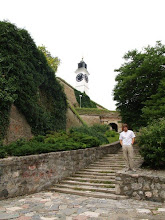Of late, enormously interesting studies have been made with regards to the evolution of life, conducted in a setting—despite the expansive scope of the subject—so humble as a mere laboratory. Although we typically imagine macroevolution in terms of the branching, pictorial summaries of the fossil record, painstakingly collected and indexed by palaeontologists over the years, the reducibility of these changes to genetics begs the question: do we still need to go to all this effort? Is palaeontology obsolete? Indeed, Prothero (2009) states, mere years after its inception in 1947 as an initially palaeontologically-friendly journal, Evolution has become almost completely dominated by genetic papers alone, boasting of drastic, in-lab phylogenetic changes and discussing infant techniques in back-dating divergence times of groups using genes alone (Briggs and Fortey, 2005).
But how indicative are these findings in regards to what has actually happened to the biosphere over geologic time? George Gaylord Simpson (1944) summarises this potential issue well: "Experimental biology... may reveal what happens to a hundreds rats in the course of ten years under fixed and simple conditions, but not what happened to a billion rats in the course of ten million years under the fluctuating conditions of natural history. Obviously, the latter problem is more important." One of the hallmarks of Stephen Jay Gould's career has been to discuss the interrelationship between evolutionary biology and geology; this led him to become a champion in stressing that palaeontology must retain an important role in mapping the history of life. His theory of punctuated equilibrium provides an example, he claims, of a biological reality than biologists would have otherwise been blind to, were it not for the fossil record showing extended periods of stasis, clear as day. Marshall (2006), in his discussion of the Cambrian explosion, acknowledges a continued need to multiply and refine fossil calibration points in order to better constrain group divergence times found by still high-uncertainty genetic techniques. Furthermore, he says, these times have no comment regarding when these groups became ecologically significant; genetics tell us, for example, that mammals diverged during the Cretaceous, while the fossil record tells us of their radiation after the end-Cretaceous extinction event.
There is much to be done in resolving this issue, but the discussion thus far suggests one direction for future study: to set about confirming these palaeontological discoveries using classical biology. The notion of species stasis is one such discovery: if it is indeed true that there is a naturally-occurring genetic cohesion that resists change except in unique circumstances (a commonly cited culprit being allopatric speciation, or changes in populations due to physical isolation), this cohesion should be discoverable by geneticists and field biologists. There exist environments with not only great environmental diversity across areas with no physical boundaries (across a large island, for example), but also with little diversity across physical boundaries (between the large island and its peripheral islands). Within a given family of animals on these islands, has there been much genetic change across the environmental gradient (as expected by traditional Darwinian evolution), or little to none as compared to the peripheral colonies? Ideal locations for such study can be found in many areas around the world, however particularly good examples may be found in Oceania (such as Papua New Guinea, with a diverse primary island and many satellites) and Southeast Asia (such as Indonesia, for the same reasons).
One might expect that, just as species seem to change little—if at all—through significant environmental revolutions in the fossil record, so too might they change little across extant gradients. If this is found to be true, and I believe it would be, this would constitute an adequate example of how conventional biology alone cannot lead to a complete understanding of natural history; that a continued consilience between genetics and palaeontology is required to paint the fullest picture possible.

